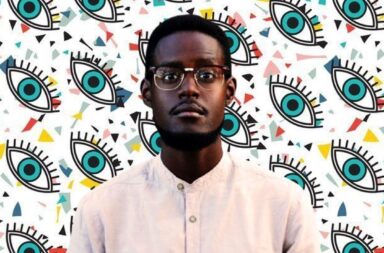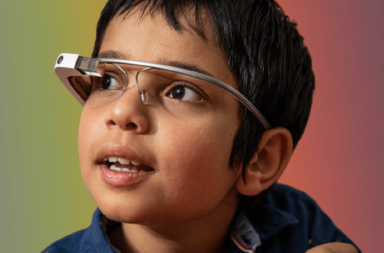The theory goes that when A.A. Milne was developing his iconic characters for Winnie-the-Pooh, he did so to represent and raise awareness of a variety of different disorders and conditions: Pooh for Eating Disorder, Piglet for Anxiety, Rabbit for Obsessive-Compulsive Disorder, Owl for Dyslexia, Roo for Autism Spectrum Disorder and Eeyore for… well, I’m sure you can work out what Eeyore was meant to represent.
In fact, this theory has grown so much that in 2000 (a year which was no doubt a slow year for medical advances) the Canadian Medical Association published a journal diagnosing the characters of The Hundred Acre Wood. So, with the release of the new Christopher Robin film around the corner, now felt like the perfect time to do my own research into the truth behind the Winnie-the-Pooh Conditions Theory and what, if anything, it could mean for the autistic community. 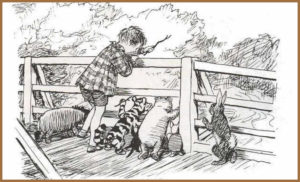
Does Roo Actually Demonstrate Traits of Autism?
Whereas a case can certainly be made for diagnosing many of the characters in Winnie-the-Pooh with certain disorders, e.g. Piglet with Anxiety, Roo’s supposed autism is the diagnosis I have the hardest time trying to accept.
According to many internet forums, Roo has been linked to autism as ‘ He lacks awareness of danger and has a strange attachment to sitting in his mother’s pouch’. However, after making my way through some of Roo’s earlier adventures this week, it’s quite clear that his lack of awareness to danger seems to be as a result of being young and careless – definitely not anything spectrum related. Furthermore, concerning the reports that his attachment to his mother’s pouch is an obvious symptom of autism, this is something I really can’t see – especially as, in his first appearance, he ignores his mum’s requests to get in the pouch as he is too busy practising his bouncing.
Whilst I do believe there are certain elements of being on the spectrum which Roo demonstrates, such as repeating what he hears, it would be a stretch to say this confirm his autism.
Does this mean that my dream of having autistic representation in a timeless children’s tale is over? Not just yet.
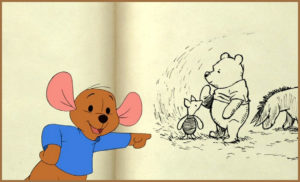
Could Winnie-the-Pooh Represent Autism?
Although not as popular as the Roo-being-autistic theory, there are some who have put forward the idea that Pooh Bear himself is on the spectrum and it’s not hard to see why:
- Pooh has a restricted diet
- Pooh has a limited awareness of his actions
- Pooh uses music and humming as a coping technique
- Pooh does not understand social cues
- Pooh believes everything he is told to be true
From what I have read, it can even be suggested that Pooh is face blind, as demonstrated in this extract from Chapter Eight, where Pooh bumps into Rabbit whilst gathering people for an expedition to the North Pole:
The first person [Pooh] met was Rabbit
‘Hallo, Rabbit he said is that you?’
‘Let’s pretend it isn’t’ said Rabbit ‘and see what happens’
Obviously, an easy way to shoot down this suggestion (and another suggestion afterwards) is to bring up the fact that autism, as we know it, wasn’t documented until the early 1940’s. Whereas, in 1924, when Winnie the Pooh was written, autism was solely being used to describe withdrawn people (something which Pooh Bear is anything but). This shouldn’t discredit the idea that Milne was indeed trying to raise awareness of all the other conditions though as, despite this setback, he still had more than enough incentive.

It’s no secret that, after serving as an air pilot in WWII, A.A. Milne suffered from P.T.S.D.. So, it wouldn’t exactly be a stretch to imagine that Milne used his writing as an opportunity to spread awareness of the needs and conditions which affected himself and so many others.
This is made all the more possible when we consider that, despite the many fantastical elements of Winnie-the-Pooh, Milne’s tales were often grounded and inspired by real events; such as his real son Christopher Robin’s childhood, or the adventures of Winnie the bear, a black bear who came to London during WWI.
Whether or not that means you choose to accept that Milne did indeed base EVERY character on a condition is up to you. However, the reality is that, regardless of Milne’s original intent, people still can and do, interpret his characters this way – and that’s not a bad thing. At best it means that young autistic children can find a character to be inspired by from an early age. At worst, it gives everyone else an excuse to revisit the timeless tale of a honey-loving bear from an interesting, if unconventional, new perspective.
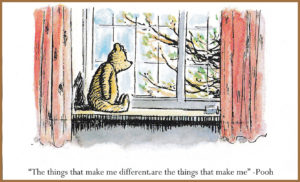
Carry on the Conversation:
Which, if any, Winnie-the-Pooh character do you think depicts autism best and who from The Hundred Acre Wood is your favourite? Let me know in the comments below. As always, there are no wrong answers (however, if you don’t answer ‘Rabbit’ and do answer ‘Eeyore’ you are not right).
I can also be found on Twitter: @AutismRevised and via my email: AutisticandUnapologetic@gmail.com.
If you like what you have seen on the site today, then show your support by liking the Autistic & Unapologetic Facebook page. Also, don’t forget to sign up to the Autistic & Unapologetic newsletter (found on the sidebar on laptops and underneath if you are reading this via mobile) where I share weekly updates as well as a fascinating fact I have found throughout the week.
Thank you for reading and I will see you next Saturday for more thoughts from across the spectrum.
(Photo credit for featured image: Disney)

